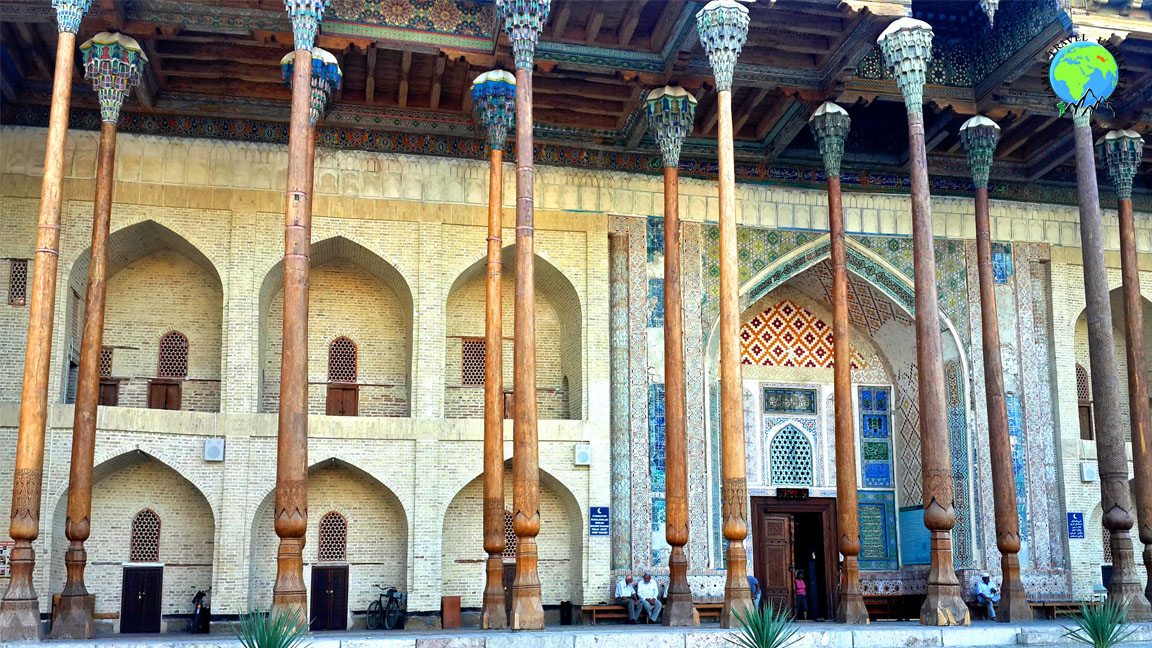


Registan Square - located to the west of the Ark Fortress, had a busy downtown area long before Bukhara was conquered by the Arabs. In the 17th century, the area was supplemented by a series of paragraphs on the square in order to occupy further market transactions. One of the caravan routes, connecting Bukhara and Khorezm, led to the square in front of the Dashtak city gate. Here the merchants traded in grain, textiles, weapons, headwear, cattle, fruit, paper and ink. There are grouped caravanserais and rich merchant houses around the square. These buildings have not survived today, with the exception of the neighborhood Bolo-Hauz Mosque, which is opposite the Ark. The Bolo-Khauz Mosque was built in 1721 with money donated by the wealthy Bukhara residents. It was originally an elongated, domed mosque with a Mekhrob niche, facing Mecca. In the early 20th century, an Ayvan terrace was added to its facade with two rows of loggias. This Ayvan is a true masterpiece of traditional Uzbek applied arts. The roof of the Ayvan is supported by two rows of elegant columns. Each column consists of several tree trunks which are connected together with metal rings. The tops of the two central pillars showing the entrance to the mosque are connected by an elegant double arch. The lower teardrop-shaped part of each column rests on a pedestal that is decorated with beautiful carvings. The large stalactite-like capitals of the columns are particularly impressive. The vaulted loggias and the ceiling of the Ayvan are painted with magnificent paintings. The panels of the coffered ceiling are covered with unique decorative geometric patterns of amazing workmanship. The centuries-old tradition of mosque-Bukhara decoration undoubtedly had its proper continuation in the Bolo-Khauz. In 1917, the famous Bukharas architect Usto Shirin Muradov built a small minaret with a large water basin in front of the mosque. Its decorative masonry, tiles with decorative ribbons and the upper lantern-like rotunda with eight arched openings are reminiscent of the Kalyan minaret.